Introduction
Whether you’re minting an NFT, deploying a smart contract, or developing the next big dApp on the Ethereum network, you must pay a gas fee.
However, paying a real gas fee on the Ethereum blockchain during development can be very expensive. So it’s recommended to use a Testnet Token or Devnet Token during development.
This article discusses the various types of Ethereum blockchain Testnet and provides 5 sources where you can request Testnet (fake) tokens for your Ethereum-based dApp development before deploying them to production.
What Is a Gas Fee? 💰
A gas fee, or transaction fee, is a network charge for every transaction on the Ethereum blockchain, which is used to compensate miners for verifying transactions on the blockchain.
Blockchain miners are people who use software to solve transaction-related algorithms that check and confirm blockchain transactions.
What Is a Testnet Token?
A Testnet Token or Coin is a fake version of the real cryptocurrency obtained from a faucet that can be used to pay Ethereum gas fees during development.
A crypto faucet is an app or website that gives users small amounts of cryptocurrency, in exchange for completing simple tasks like solving a CAPTCHA (Completely Automated Public Turing test to tell Computers and Humans Apart).
Testnet tokens obtained from a faucet are not real funds and do not have value.
Types of Ethereum Testnet
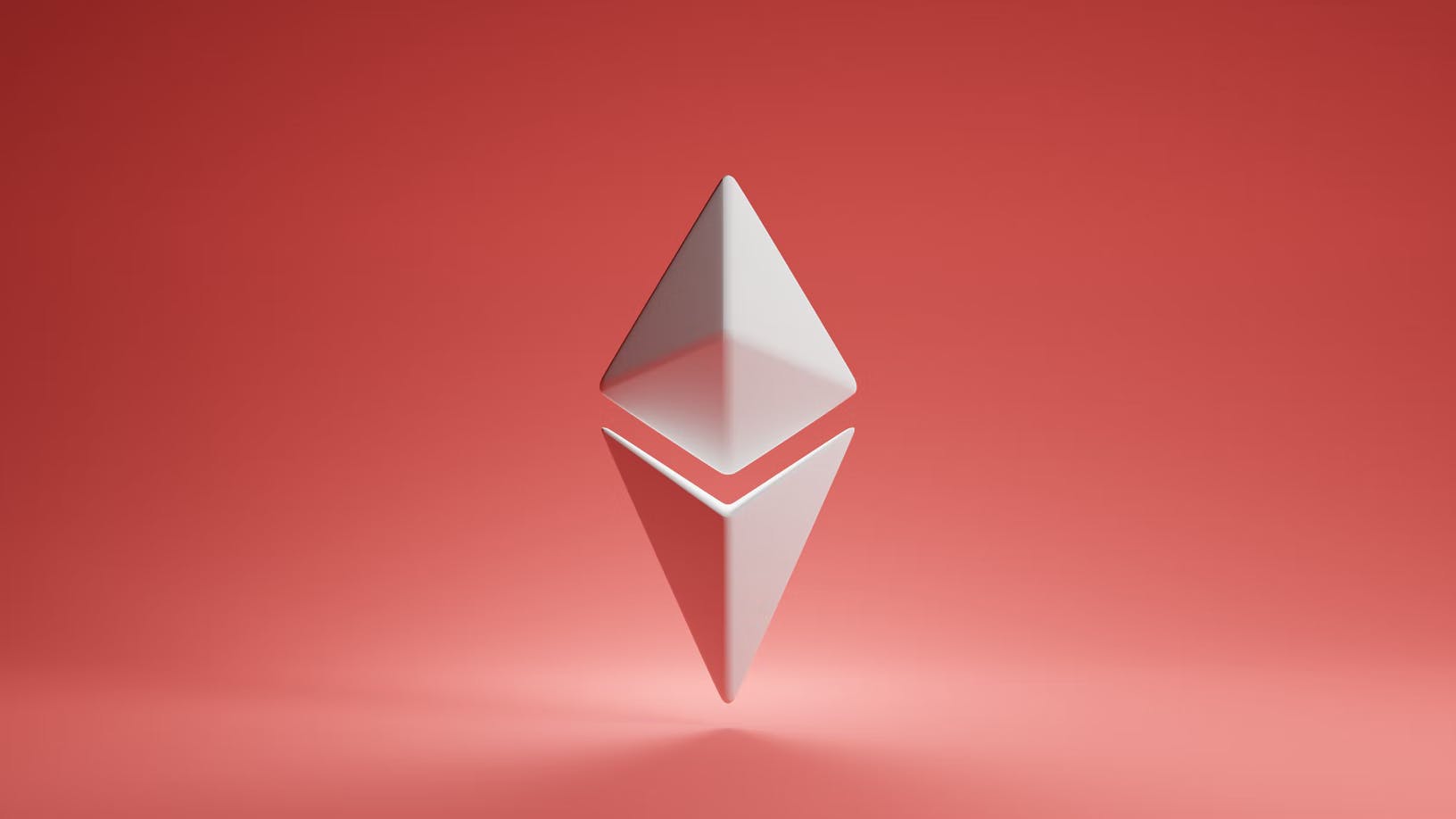
There are different types of Ethereum Test networks that we can develop on and test our dApps before deploying them on the Ethereum Mainnet. We’ll discuss the Rinkeby, Goerli, Ropsten, and the Kovan Test network below:
1. The Rinkeby Testnet
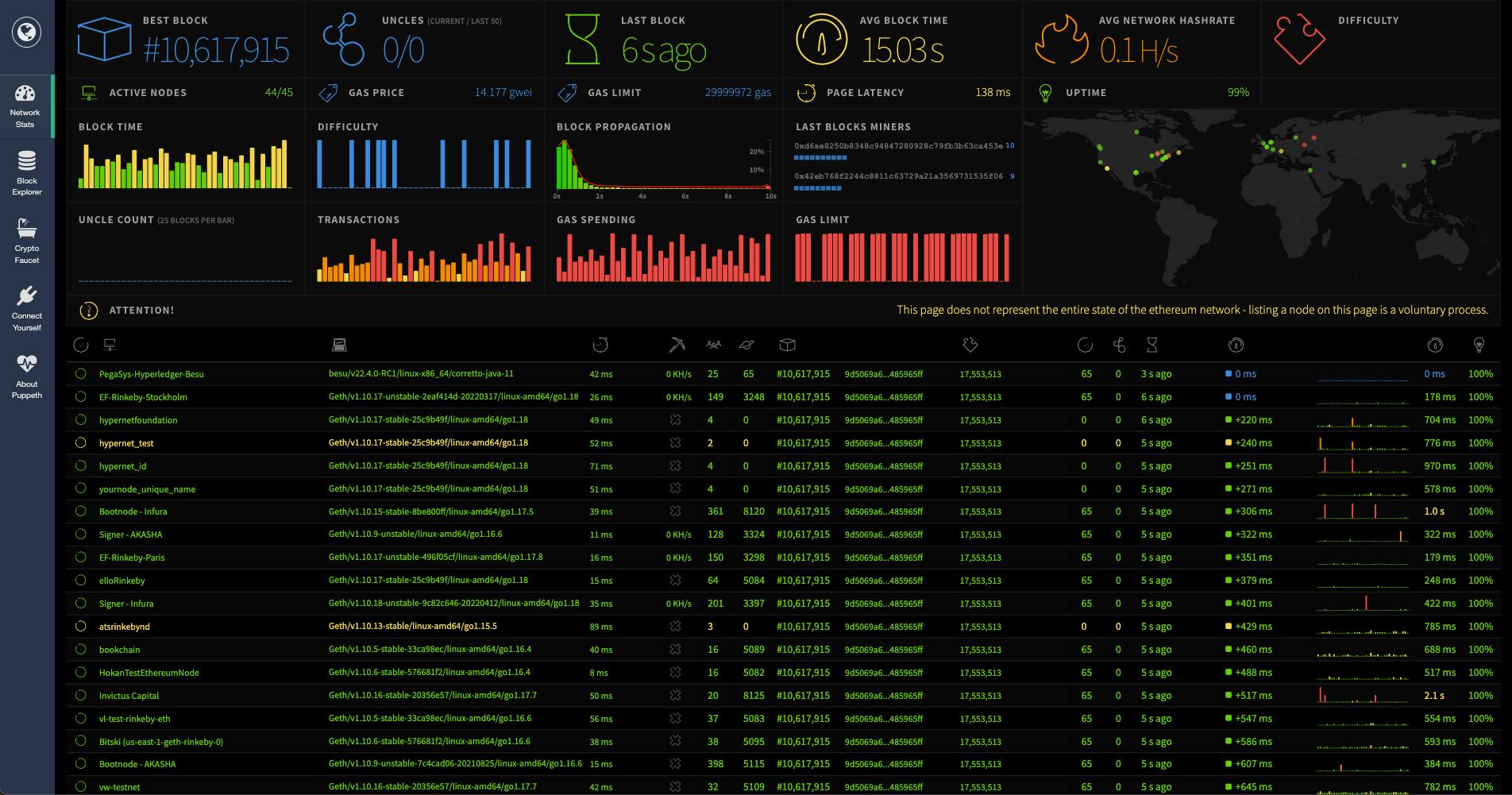
Rinkeby is a proof-of-authority blockchain that was founded in April 2017 by the Geth team. It’s an Ethereum Mainnet fork that is supported by the Geth network, Nethermind network, and Hyperledger Besu network.
Rinkeby network is designed to test dApps during development before deploying them on the main Ethereum network.
The Rinkeby test network is included in your Metamask wallet:
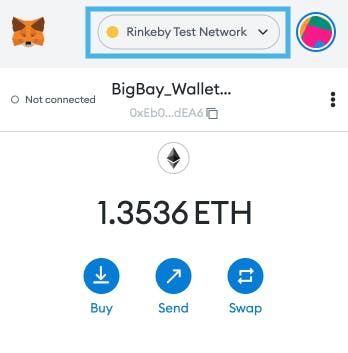
Block Explorer: explorer.anyblock.tools/ethereum/ethereum/rinkeby.
Website: www.rinkeby.io
2. The Goerli Testnet
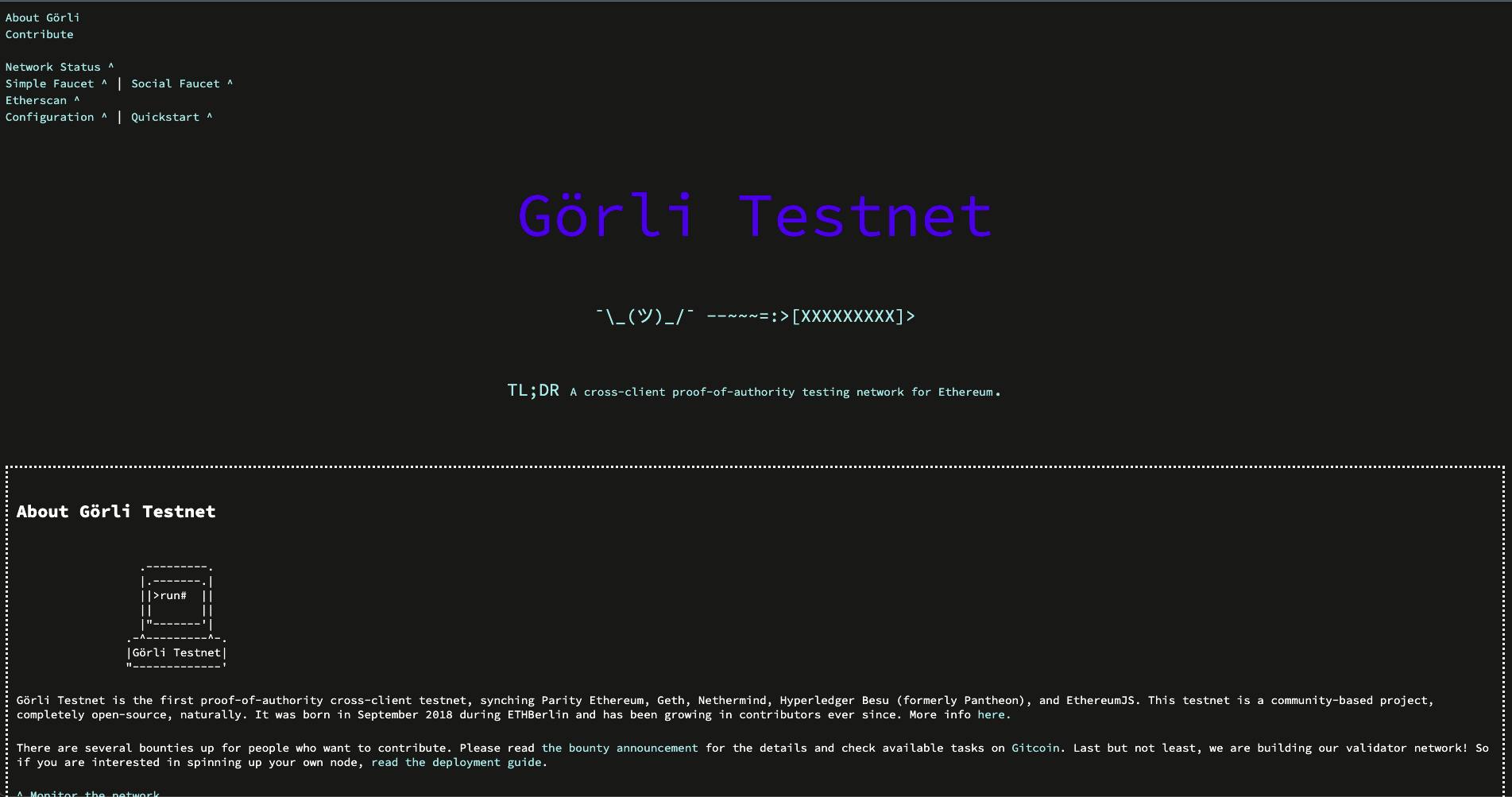
Don’t judge a book by its cover.
Goerli, also known as Görli Testnet, is the first Proof-of-Authority cross-client Testnet for Ethereum that was introduced in September 2018. It’s designed to run on several networks, including Parity Ethereum, Geth, Nethermind, Hyperledger Besu (previously Pantheon), and EthereumJS.
It’s also an open-source Ethereum test network that enables blockchain development testing before deploying on the Mainnet (the main Ethereum network).
The Goerli test network is included in your Metamask wallet:
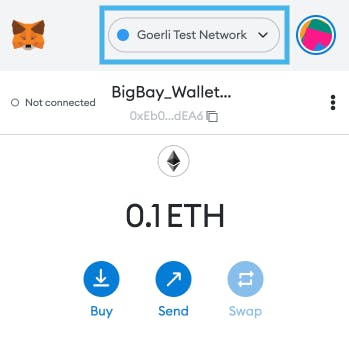
Block Explorer: explorer.anyblock.tools/goerli.
Website: goerli.net
3. The Ropsten Testnet

Ropsten network is one of the first test networks (since 2016) which supports Geth and Parity clients. It was based on Proof-of-Work, and it succeeded the first Test network called “Morden”.
Ropsten uses the same algorithm as the Ethereum Mainnet, and it’s considered the original carbon copy of the main Ethereum network, which makes it great for development.
It experienced a lot of cyber attacks between February 2017 and March 2017, which forced the team to shut down the project, and bring it back up in April 2017.
The Ropsten test network is included in your Metamask wallet:
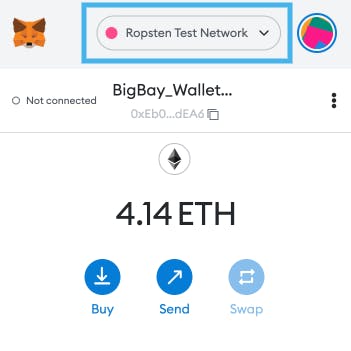
Block Explorer: explorer.anyblock.tools/ethereum/ethereum/ropsten.
Website: faucet.ropsten.be
4. The Kovan Testnet
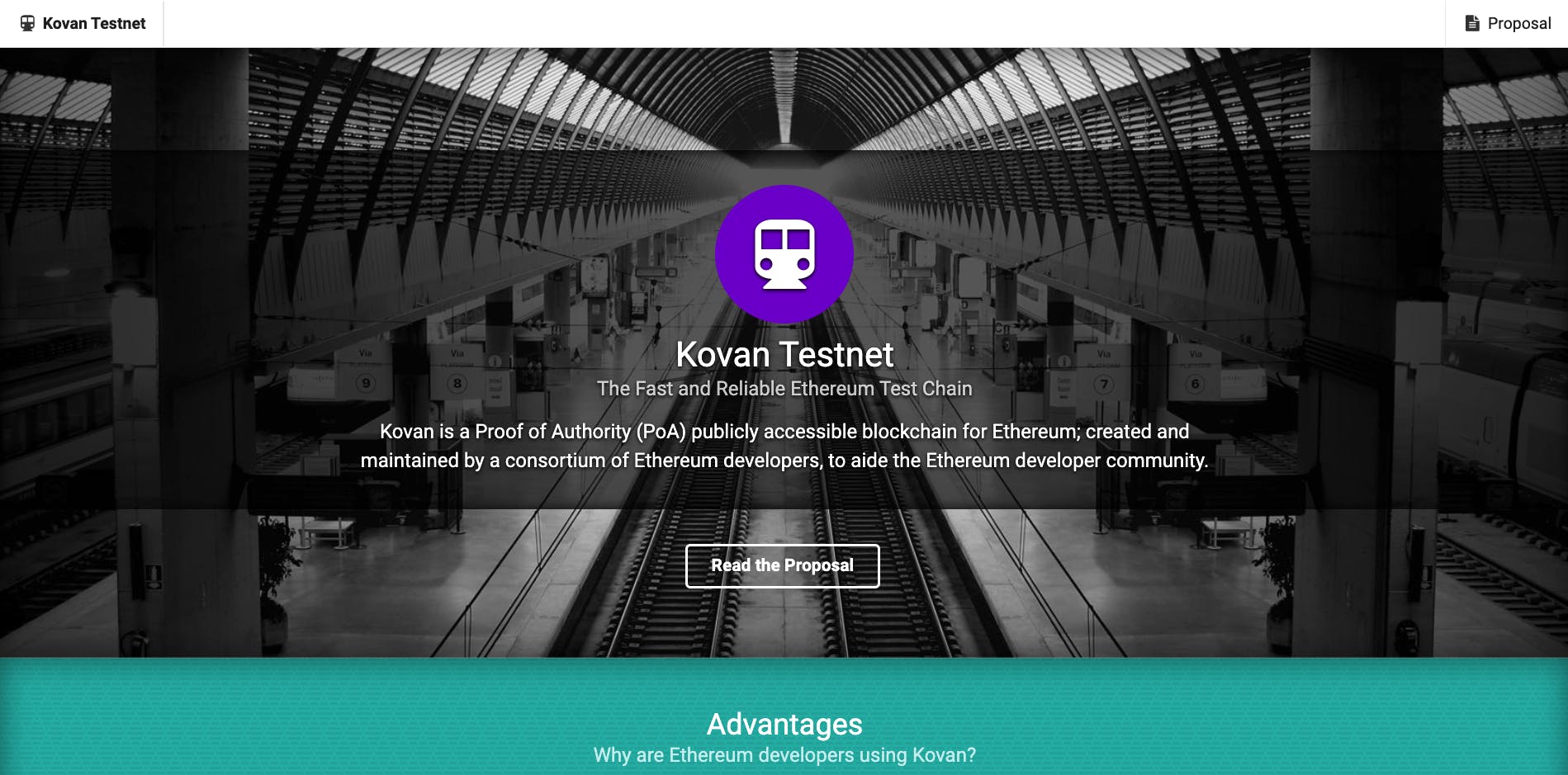
The Kovan test network is a Proof-of-Authority Testnet for Ethereum, originally started by the Parity team (now OpenEthereum) in March 2017.
Just like the Rinkeby Testnet, Kovan is a fork of the Ethereum Mainnet, which makes it great for Ethereum-based dApp developments.
The Kovan test network is included in your Metamask wallet:
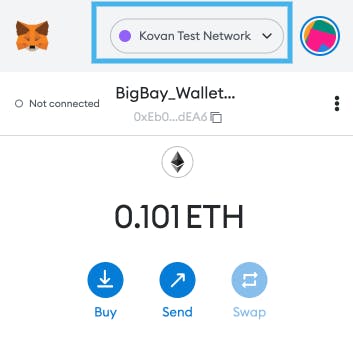
Block Explorer: explorer.anyblock.tools/ethereum/ethereum/kovan
Website: kovan-testnet.github.io/website
5 Places to Get Testnet Tokens
1. Chainlink Faucet
Chainlink (LINK)…
Read More: web3.hashnode.com









 Bitcoin
Bitcoin  Ethereum
Ethereum  XRP
XRP  Tether
Tether  Solana
Solana  Dogecoin
Dogecoin  USDC
USDC  Cardano
Cardano  Lido Staked Ether
Lido Staked Ether  TRON
TRON  Avalanche
Avalanche  Wrapped stETH
Wrapped stETH  Sui
Sui  Chainlink
Chainlink  Toncoin
Toncoin  Shiba Inu
Shiba Inu  Stellar
Stellar  Wrapped Bitcoin
Wrapped Bitcoin  Hedera
Hedera  Polkadot
Polkadot  WETH
WETH  Bitcoin Cash
Bitcoin Cash  Uniswap
Uniswap  Pepe
Pepe  Hyperliquid
Hyperliquid  Litecoin
Litecoin  LEO Token
LEO Token  Wrapped eETH
Wrapped eETH  NEAR Protocol
NEAR Protocol  Ethena USDe
Ethena USDe  Internet Computer
Internet Computer  USDS
USDS  Aptos
Aptos  Aave
Aave  Mantle
Mantle  Render
Render  Bittensor
Bittensor  Cronos
Cronos  POL (ex-MATIC)
POL (ex-MATIC)  Ethereum Classic
Ethereum Classic  Artificial Superintelligence Alliance
Artificial Superintelligence Alliance  WhiteBIT Coin
WhiteBIT Coin  Virtuals Protocol
Virtuals Protocol  Arbitrum
Arbitrum  MANTRA
MANTRA  Monero
Monero  Tokenize Xchange
Tokenize Xchange